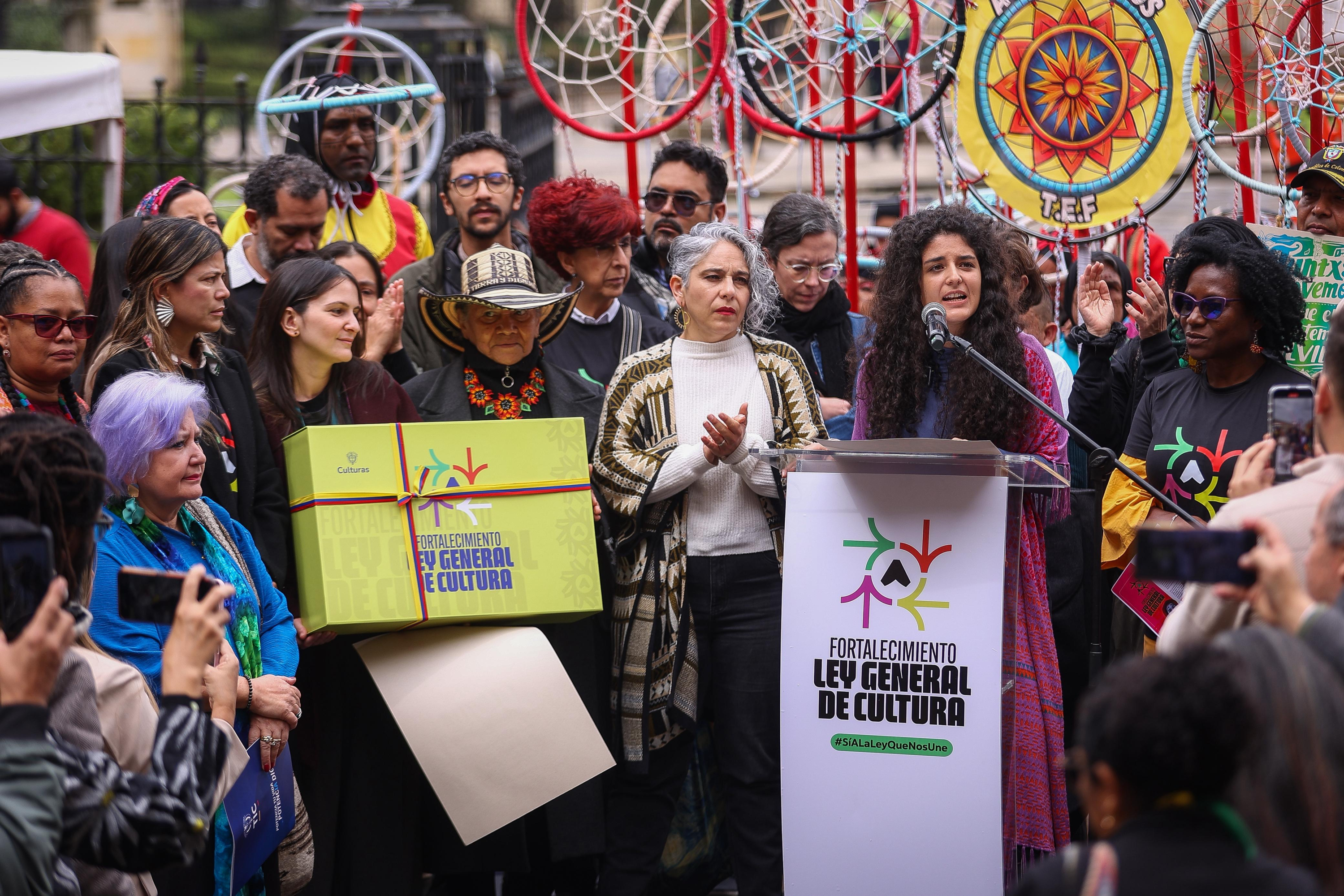The bill updating the General Culture Law was approved in the first debate: How will it benefit the artistic sector?

The bill to Strengthen the General Law on Culture was approved in the first debate held in the Sixth Committee of the House of Representatives. This legislative initiative seeks to expand opportunities for artists, creators, workers, scholars, and all stakeholders in the cultural ecosystem.
This bill updates the legal framework of the General Law of Culture—Law 397 of 1997—created 28 years ago as the legal foundation of the cultural movement in Colombia. This measure paves the way for institutional and sectoral organization at the time.
One of the main objectives of this initiative is to avoid affecting any of the benefits established in current cultural legislation.
"This project is a commitment to recognizing difference, to the diverse identities of the country's 32 departments. This policy is collaborative and was developed with more than 7,000 people in 17 regional meetings . Voices from both the cultural and political sectors are present here," said the Minister of Culture, Arts, and Knowledge, Yannai Kadamani Fonrodona.

Presentation of the bill that will update the Law on Cultures. Photo: Lina Rozo - Ministry of Cultures
He added: "It also includes Community Living Culture, artistic education, popular economies, and cultural and community tourism. It is, above all, recognition of the artistic sector and the rebalancing of the cultural and knowledge sector."
The Speaker of the House of Representatives, Jaime Salamanca, said: " The cultural sector in Colombia has been working for many years. This project unites us, invites us, and calls us together to strengthen culture in Colombia. It seeks to update Law 397, after 30 years."
For his part, Daniel Carvalho, the House representative for the department of Antioquia, stated: "The fact that the project to strengthen the General Law on Culture was carried out in a participatory manner over two years demonstrates that there is an effort to understand and listen to the sector."
In addition to the people who participated in the 17 meetings in all regions of the country , the National Council of Culture, the National Assembly of Culture, and representatives of various cultural sectors, such as audiovisual, visual arts, books and reading, concerted theaters, museums, libraries, as well as artisans and representatives of cultural heritage, also joined this collective construction.
Another of its premises was to support the project's principles with concrete, economic, regulatory, intersectoral, and transversal tools that would effectively strengthen all areas of culture.

fgbfb Photo: Courtesy of Minculturas.
According to the Ministry of Culture, the proposed incentives and economic mechanisms have the technical endorsement of the Ministry of Finance, ensuring viability and sustainability.
What does this project strengthen? The new document contributes to four pillars for the development of cultures, arts, and knowledge: Bridging Cultural Divides, Governance and Participatory Spaces, Sectoral and Intersectoral Strengthening, and Funding Incentives.
In this sense, the project incorporates into the cultural ecosystem and its laws, such as the film law, the library law, the book law, the heritage law, and the public entertainment law, among others, sectors that were not expressly mentioned in the General Law of Culture of 1997, such as living arts, emerging cultures, street and digital art, convergent content, Community Living Culture, multimedia art, graphic arts, cultural tourism and ethnotourism, as well as citizen, community, ethnic, peasant, and alternative journalism and communication.
eltiempo





